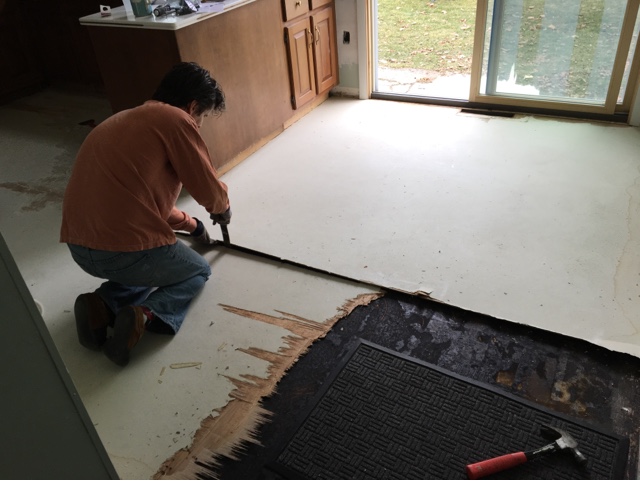Late last week the cabinet install company came out to test our walls for lead paint. Given that out house was built in the mid-50's, and has peeling/chipping paint, it was a very real possibility.
However, it does NOT contain lead. (Yay! Both for the health risk and added expense if it HAD been positive.
But then we started the seam where the kitchen meets the (carpeted) living room. As soon as we lifted the carpet edge, we saw there was an extra layer of plywood in the kitchen. Maybe, instead of this awful paper removal, we could just pry up the plywood and toss it. After all, we needed to have the floors at the same height or there would be a drop-off.
And they popped up beautifully!
Unfortunately, there was a very sticky glue that still showed the pattern of the tile from the original owners. It was a mess!
So we worked awhile at getting the tarry mess up until one of us mused "hope there's no remnants of asbestos in this tar from what was likely asbestos tiles." Off to the Internet only to find that many adhesives used in the 50's contain asbestos!!!
<insert panic>
After speaking with two asbestos specialists, we calmed down, covered it with plastic (more for covering the gooey stuff than for protection), and scraped up a sample to take to a lab this week for testing.
Because it's not disintegrated, even if it DOES contain asbestos, it's not friable, and therefore not releasing particles--which is when it's dangerous. However, if it does contain asbestos, we'll still have to do abatement (=$$$).
(Sigh) Remind me again why we decided to remodel? :)




No comments:
Post a Comment